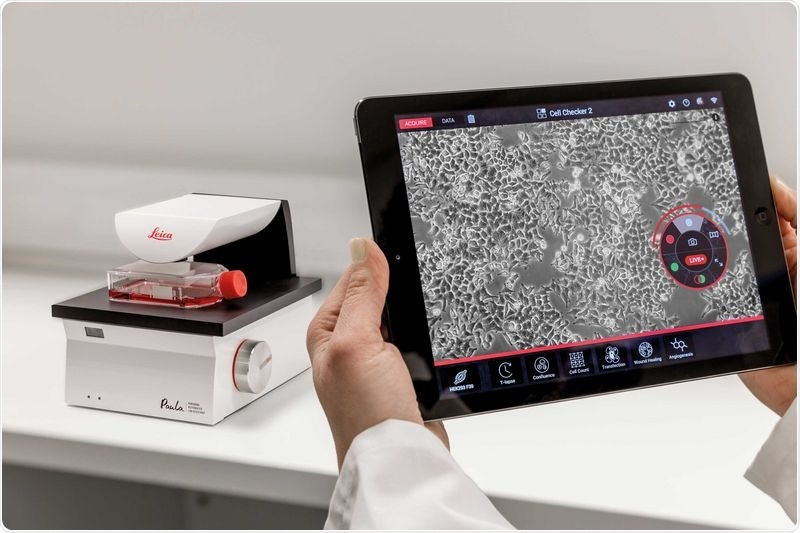PAULA, the world’s first Personal AUtomated Lab Assistant from Leica Microsystems, is ready to help out cell-lab users. As a new member of the team, PAULA would take over a large number of time-consuming, routine manual tasks that are done in every cell lab.

For example, PAULA is able to easily perform reliable confluence checks with consistent quality and automatically provide seamless documentation, even for a large number of cell lines. With PAULA embedded in your network, you have access to the cell lines and, especially, the results from anywhere at any time. PAULA can monitor cell cultures 24/7, even inside an incubator, and send you messages when the cells reach a predefined state. So you know exactly when the cells are ready for the next step.
PAULA is a great example of Leica Microsystems' transition from a historical technology-centric thinking — where technological advancements motivated design — toward being user-application and, in this case, even sample centric,”
Markus Lusser, President of Leica Microsystems.
“From the user’s perspective, PAULA significantly reduces the amount of manual, time-consuming, and often error-prone work steps required to drive life science experiments. It’s simply a new way of working with a smart assistant by your side,” Lusser explains. “PAULA also marks a new era for the lab as it is clearly a new type of service-oriented digital solution for researchers”.
After just a few days, PAULA becomes an integral part of every team. Everyone benefits from the assistance being offered as PAULA frees up time for valuable scientific work. Consistent and regular checks of cell lines increase the quality of their status, as well as documentation, leading to more reproducible downstream analysis and results. PAULA is even smart enough to learn new tasks as new applications and workflows become available from Leica Microsystems.
PAULA is based on a unique optical layout (patent pending) combining multi-channel LED fluorescence and phase illumination with the highest optical quality and robustness of design, because no moving parts are needed. The footprint is extremely small, so multiple PAULA systems can even be placed inside an incubator to constantly monitor cells. On the lab bench, PAULA offers fast and convenient multi-flask usability. The unique, integrated barcode reader makes obsolete the time-consuming and error-prone registration of samples, done prior to any measurements.
PAULA can be operated and controlled remotely through standard off-the-shelf devices, such as tablets or PC’s. Therefore, users are able to check at any time and from anywhere how their cells are doing. So, the time has finally come where cell lab researchers no longer have to drive to the lab during weekends or holidays just to check the status of their cells.
PAULA would be a welcome, new member to any team. No one would hesitate to ask PAULA – How are my cells doing today?